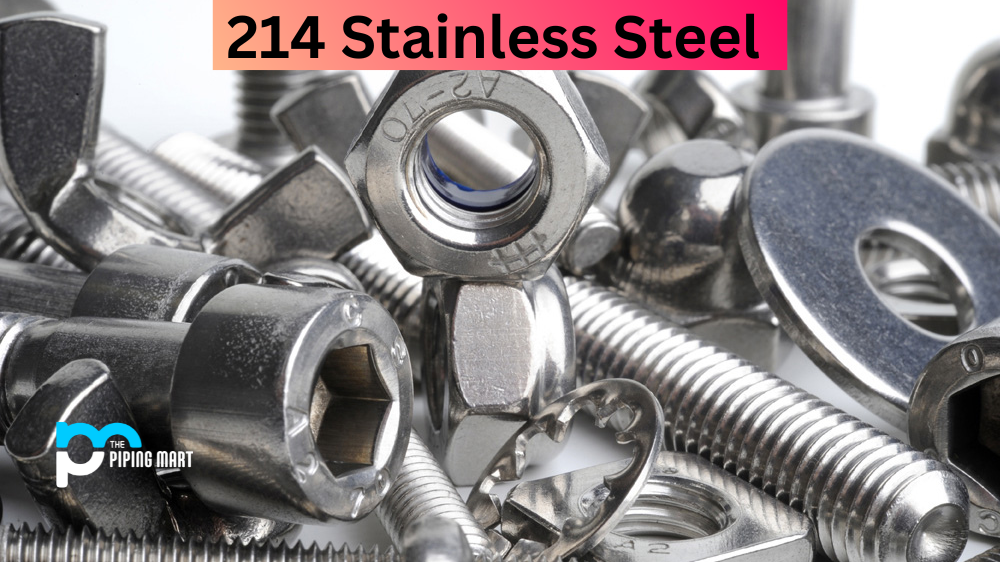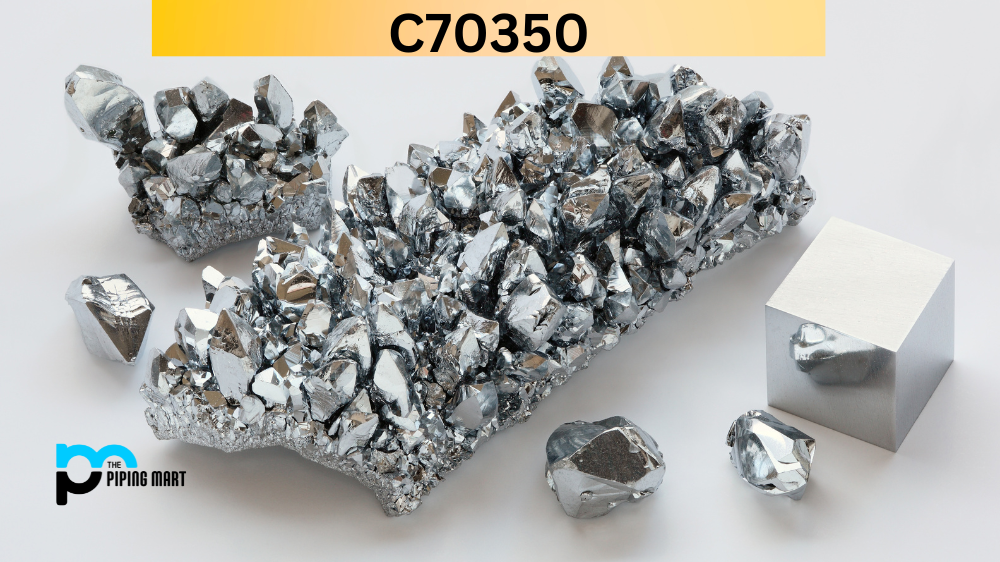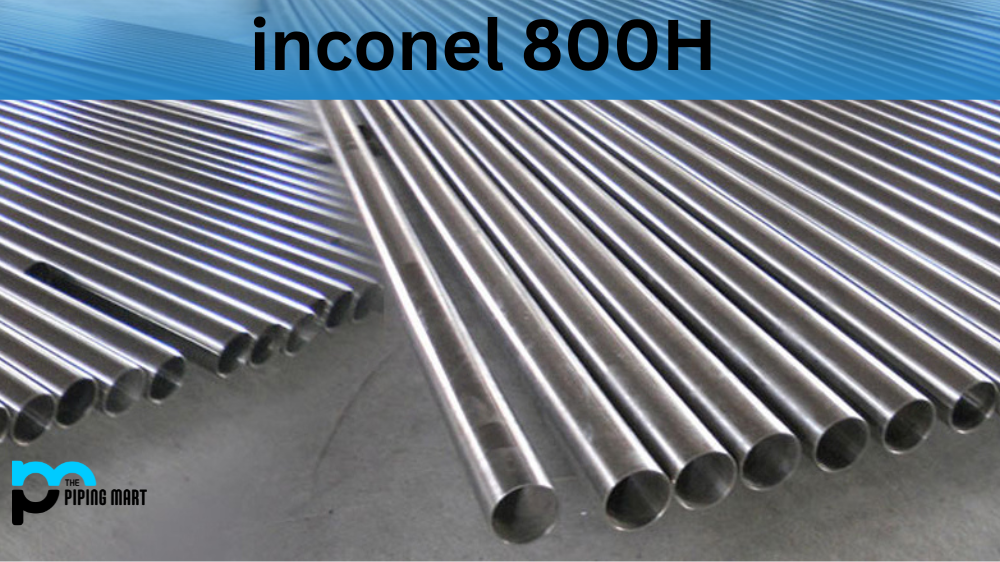UNS N06617 is an alloy created from nickel, chromium, and cobalt that is well-known for its high-temperature applications. It has a unique set of characteristics that make it an ideal choice for a variety of applications, including furnaces and turbines. In this article, we’ll explore the composition, chemical properties, physical properties, and uses of Inconel 617.
617 Inconel Composition
UNS N06617 has a composition of 58% nickel, 20% chromium, 12% cobalt, 5-7% molybdenum, 2-4% tungsten and 4-6% iron. This alloy is also known to contain small amounts of silicon and manganese. The combination of these elements creates a material with excellent mechanical strength at high temperatures as well as good oxidation resistance.
| Elements | Content (%) |
|---|---|
| Nickel, Ni | 48.85-62 |
| Chromium, Cr | 20-24.0 |
| Cobalt, Co | 10-15 |
| Molybdenum, Mo | 8-10 |
| Manganese, Mn | ≤ 1 |
| Silicon, Si | ≤ 1 |
| Carbon, C | ≤ 0.15 |
617 Inconel Chemical Properties
UNS N06617 is resistant to oxidation even when exposed to temperatures up to about 1200°C (2192°F). It also has excellent corrosion resistance in both oxidizing and reducing environments like hydrochloric acid or sulfuric acid. Additionally, the alloy is highly resistant to sulfide stress cracking due to its low sulfur content.
617 Inconel Mechanical Properties
UNS N06617 is a titanium-cobalt-chromium alloy with superior corrosion and oxidation resistance. With its increased strength from molybdenum addition and superior creep properties, Inconel 617 makes for an ideal choice for operations up to 2000°F. Its mechanical properties are exceptional as well, with a yield strength of 80 ksi at room temperature and accented by its fracture toughness. Due to its versatility and low cost, Inconel 617 is used in extremely harsh environments that require superior corrosion and oxidation resistance. As such, it is the material of choice for nuclear plants, metallurgical coal-fired boilers, sulfuric acid condensers, gas turbines, airframes and other aerospace components, as well as thermal processing equipment.
| Properties | Metric | Imperial |
|---|---|---|
| Tensile strength | ≥ 485 MPa | ≥ 70300 psi |
| Yield strength | ≥ 275 MPa | ≥ 39900 psi |
| Elongation at break | ≥ 25% | ≥ 25% |
| Hardness, Brinell | 170 | 170 |
617 Inconel Physical Properties
UNS N06617 has a tensile strength of 1100 MPa (160 ksi) while maintaining ductility even when exposed to temperatures up to 1000°C (1832°F). Its creep rupture strength also remains constant at temperatures up to 950°C (1742°F). The alloy’s thermal conductivity is approximately 11 W/mK (56 BTU/hr ft2 °F) at room temperature, which further increases with rising temperature levels; this makes it suitable for use in heat exchangers and other heat transfer applications. The material also exhibits excellent weldability, with no post-weld cracking or embrittlement observed after welding.
| Properties | Metric | Imperial |
|---|---|---|
| Density | 8.3g/cm³ | 0.302 lb/in³ |
| Melting point | 1363°C | 2485°F |
617 Inconel Equivalent
- DIN 2.4663
617 Inconel Uses
Due to its excellent high-temperature properties, UNS N06617 can be used in many different types of components, such as furnace parts and turbine blades where extreme temperatures are experienced. It is also used in aircraft engines because its low coefficient of thermal expansion helps reduce distortion caused by temperature changes during operation. Furthermore, the material can be used in nuclear fuel element cladding due to its superior corrosion resistance in both acidic and alkaline media. Lastly, it can be used for specialized valves and pumps operating under extreme conditions, such as high-pressure or corrosive environments.
Corrosion Resistance
Inconel 617 is an advanced-generation nickel alloy that offers best-in-class corrosion resistance. It possesses superb strength and durability and resists oxidation even in high temperatures up to 1200°C. Thanks to its amazing features, Inconel 617 is extremely popular for heat exchanger components, gas turbine components, structural components, hot valve trim, and rocket thrust chambers. Furthermore, it also exhibits excellent resistance to hot gases and pure hydrogen atmospheres, as well as sulfidation. Inconel 617 is ideal for heavy-duty applications that require extreme pressure and temperature environments.
Heat Resistance
Inconel 617 is well-known for its superior heat resistance capabilities. This material provides a longer service life due to its high resistance to oxidation, corrosion and scaling at elevated temperatures. It can withstand harsh thermal shocks and rapid temperature changes, which makes it perfect for use in high-heat industries such as aerospace, chemical processing and automotive manufacturing. The suitability of Inconel 617 for extreme temperatures makes it invaluable in many applications. It is also a popular choice because of its cost-effectiveness, making it an ideal solution when looking for performance at an affordable price.
Heat Treatment
Heat treatment of Inconel 617 can drastically improve its intrinsic properties, making it a great choice for extreme temperatures and high pressure. Heat treatment involves heating the material to a certain temperature, at which point it is held for a set period before being rapidly cooled. This process temporarily alters the physical and mechanical properties of the metal to increase malleability and corrosion resistance while also improving its strength and wear resistance. Proper heat treatment can turn Inconel 617 into a veritable fortress that performs extremely well in challenging conditions where other materials would not be suitable.
Machining
Inconel 617 is a nickel-chromium-based alloy that is ideal for many high-temperature applications. Machining this particular metal can be difficult. However, the right tools, experience, and know-how make it possible. In order to machine Inconel 617, high-speed steel or carbide cutters requiring coolants must be used. Additionally, due to its hardness, it requires slow feed rates and depth of cuts using sharp cutting tools, which helps reduce vibrations as well as minimize heat build-up while machining. With the right technique and careful setup of the machinery, it can produce an excellent finish on Inconel 617 with minimal problems.
Welding
Welding Inconel 617 requires a skilful application of technique. The alloy has an affinity for nitrogen, so welders must be sure to use an abrasive filler metal with a high nitrogen content. This special welding process increases the risk of crack formation, so Welders must exercise caution and take extra care in preparation and technique in order to produce an effective weld. Furthermore, because of its composition, Inconel 617 is best welded with multiple passes instead of risking a single pass-over that may not be enough to maintain good penetration. Knowing these details before beginning will make the welding process much smoother and will save time and resources in the long run.
Conclusion
In conclusion, Inconel 617 is an ideal choice for components that require exceptional strength at elevated temperatures while also exhibiting good corrosion resistance in various media such as acids or alkalis. Its combination of mechanical properties makes it suitable for many different applications ranging from aircraft engines to speciality valves and pumps operating under extreme conditions. If you’re looking for a material that can stand up to extreme temperatures while still providing corrosion protection, then look no further than Inconel 617!

Abhishek is a seasoned blogger and industry expert, sharing his insights and knowledge on various topics. With his research, Abhishek offers valuable insights and tips for professionals and enthusiasts. Follow him for expert advice on the latest trends and developments in the metal industry.




